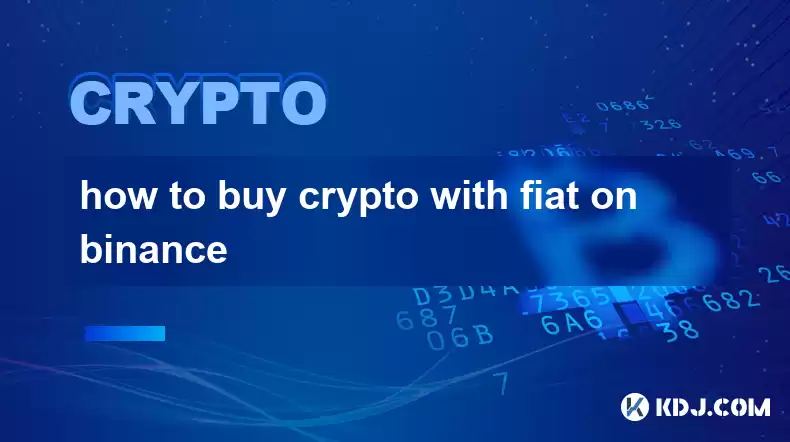-
 Bitcoin
Bitcoin $117600
0.25% -
 Ethereum
Ethereum $4424
0.10% -
 XRP
XRP $3.101
0.50% -
 Tether USDt
Tether USDt $1.001
-0.01% -
 BNB
BNB $836.2
1.26% -
 Solana
Solana $188.8
2.11% -
 USDC
USDC $1.000
0.01% -
 Dogecoin
Dogecoin $0.2301
0.57% -
 TRON
TRON $0.3485
-1.00% -
 Cardano
Cardano $0.9209
-1.34% -
 Hyperliquid
Hyperliquid $46.72
-1.19% -
 Chainlink
Chainlink $22.62
4.84% -
 Stellar
Stellar $0.4275
-0.38% -
 Sui
Sui $3.761
1.91% -
 Bitcoin Cash
Bitcoin Cash $586.7
-0.25% -
 Ethena USDe
Ethena USDe $1.001
0.01% -
 Hedera
Hedera $0.2510
2.06% -
 Avalanche
Avalanche $24.21
2.22% -
 Litecoin
Litecoin $119.7
1.07% -
 Toncoin
Toncoin $3.450
1.06% -
 UNUS SED LEO
UNUS SED LEO $9.411
-0.93% -
 Shiba Inu
Shiba Inu $0.00001298
1.20% -
 Uniswap
Uniswap $10.98
3.25% -
 Polkadot
Polkadot $3.961
2.16% -
 Dai
Dai $1.000
0.00% -
 Bitget Token
Bitget Token $4.642
0.95% -
 Cronos
Cronos $0.1514
0.57% -
 Ethena
Ethena $0.7290
3.78% -
 Monero
Monero $254.1
7.69% -
 Pepe
Pepe $0.00001102
2.47%
how to buy crypto with fiat on binance
To purchase cryptocurrency with fiat currency on Binance, create an account, fund it, select your desired cryptocurrency, place an order, and securely store your assets.
Feb 03, 2025 at 04:24 am

Key Points
- Select and create a Binance account
- Fund your Binance account with fiat currency
- Choose the cryptocurrency you want to buy
- Place your order and complete the transaction
- Store your cryptocurrency securely
How to Buy Crypto with Fiat on Binance
1. Select and Create a Binance Account
- Visit the Binance website and click on "Register"
- Choose an email address and password
- Enter your referral code (optional)
- Click on "Create Account"
- Verify your email address and complete your account setup
2. Fund Your Binance Account with Fiat Currency
- Log in to your Binance account and click on "Deposit"
- Select the fiat currency you want to deposit (e.g., USD, EUR)
- Choose a deposit method (e.g., bank transfer, credit card)
- Follow the instructions on the screen to complete your deposit
3. Choose the Cryptocurrency You Want to Buy
- Click on "Trade" and then "Spot"
- Search for the cryptocurrency you want to buy (e.g., Bitcoin, Ethereum)
- Click on the cryptocurrency and choose the trading pair (e.g., BTC/USDT)
4. Place Your Order and Complete the Transaction
- Enter the amount of cryptocurrency you want to buy
- Choose an order type (e.g., market order, limit order)
- Click on "Buy"
- Confirm your order and complete the transaction
5. Store Your Cryptocurrency Securely
- Once your order is completed, your cryptocurrency will be deposited into your Binance wallet
- You can leave your cryptocurrency on Binance or withdraw it to a hardware wallet or other external storage solution for increased security
FAQs
1. What payment methods does Binance accept for fiat deposits?
- Bank transfer
- Credit/debit card
- Third-party payment platforms (e.g., Simplex, Banxa)
2. What cryptocurrencies can I buy with fiat currency on Binance?
- Bitcoin (BTC)
- Ethereum (ETH)
- Binance Coin (BNB)
- Tether (USDT)
- Litecoin (LTC)
- Dogecoin (DOGE)
- Ripple (XRP)
- Polkadot (DOT)
- Cardano (ADA)
- Many more altcoins and stablecoins
3. Is it safe to store my cryptocurrency on Binance?
- Binance is a reputable and secure cryptocurrency exchange
- However, it is recommended to use a hardware wallet for increased security if you plan to store your cryptocurrency for a long period of time
4. What are the fees for buying cryptocurrency with fiat on Binance?
- Bank transfers: Free
- Credit/debit cards: 1-3%
- Third-party payment platforms: Variable fees (usually higher than credit/debit cards)
5. Can I buy cryptocurrency with fiat currency on Binance from any country?
- Binance is available in over 180 countries and regions
- However, there may be restrictions on certain fiat currencies and payment methods in some countries
Disclaimer:info@kdj.com
The information provided is not trading advice. kdj.com does not assume any responsibility for any investments made based on the information provided in this article. Cryptocurrencies are highly volatile and it is highly recommended that you invest with caution after thorough research!
If you believe that the content used on this website infringes your copyright, please contact us immediately (info@kdj.com) and we will delete it promptly.
- Kazakhstan's Crypto Leap: Bitcoin ETF and Central Asia's Digital Finance Future
- 2025-08-13 12:45:19
- BlockDAG Presale Blazes Past $371M: Fundraising Frenzy Fuels Crypto Sensation
- 2025-08-13 13:05:21
- Meme Coins: Chasing the 2025 Surge – Which Will Moonshot?
- 2025-08-13 10:25:23
- Bitcoin's Wild Ride: Rally, Pullback, and What's Next
- 2025-08-13 10:25:23
- Bitcoin, Bitmax, and Institutional Demand: A New Era of Crypto Investment
- 2025-08-13 10:45:12
- Solana, ROAM, and Airdrops: What's the Buzz in 2025?
- 2025-08-13 11:35:13
Related knowledge

What is Ethereum’s Slashing mechanism and how to punish malicious behavior?
Feb 20,2025 at 03:08am
Key PointsOverview of slashingDifferent types of slashing in EthereumIncentives and consequences of slashingIdentifying and reporting slashed validato...

What is the verifier node of Ethereum and how to become a verifier?
Feb 19,2025 at 06:00pm
The Verifier Node of Ethereum: A Comprehensive GuideKey Points:What is a Verifier Node?How to Become a Verifier NodeResponsibilities and Rewards of a ...

What is Ethereum’s staking, and how to participate and earn money?
Feb 19,2025 at 04:37pm
Key Points:Understanding Ethereum's Staking MechanismSteps to Participate in StakingBenefits and Rewards of StakingSecurity and Risk ConsiderationsTec...

What is Ethereum’s DAO (Decentralized Autonomous Organization) and how does it work?
Feb 20,2025 at 03:12am
Key PointsDefinition and Structure of a DAOGovernance and Decision-Making in DAOsBenefits and Use Cases of DAOsChallenges and Limitations of DAOsWhat ...

What is Ethereum's multi-signature wallet and how to improve security?
Feb 20,2025 at 02:18pm
Key Points:Understanding the Concept of a Multi-Signature WalletBenefits and Drawbacks of Multisig WalletsRequirements for Setting Up a Multisig Walle...

What is Ethereum's oracle and how to provide data for smart contracts?
Feb 21,2025 at 01:30am
Key Points:Understanding the concept of oracles in EthereumExploring different types of oraclesDetailed guide on how to provide data for smart contrac...

What is Ethereum’s Slashing mechanism and how to punish malicious behavior?
Feb 20,2025 at 03:08am
Key PointsOverview of slashingDifferent types of slashing in EthereumIncentives and consequences of slashingIdentifying and reporting slashed validato...

What is the verifier node of Ethereum and how to become a verifier?
Feb 19,2025 at 06:00pm
The Verifier Node of Ethereum: A Comprehensive GuideKey Points:What is a Verifier Node?How to Become a Verifier NodeResponsibilities and Rewards of a ...

What is Ethereum’s staking, and how to participate and earn money?
Feb 19,2025 at 04:37pm
Key Points:Understanding Ethereum's Staking MechanismSteps to Participate in StakingBenefits and Rewards of StakingSecurity and Risk ConsiderationsTec...

What is Ethereum’s DAO (Decentralized Autonomous Organization) and how does it work?
Feb 20,2025 at 03:12am
Key PointsDefinition and Structure of a DAOGovernance and Decision-Making in DAOsBenefits and Use Cases of DAOsChallenges and Limitations of DAOsWhat ...

What is Ethereum's multi-signature wallet and how to improve security?
Feb 20,2025 at 02:18pm
Key Points:Understanding the Concept of a Multi-Signature WalletBenefits and Drawbacks of Multisig WalletsRequirements for Setting Up a Multisig Walle...

What is Ethereum's oracle and how to provide data for smart contracts?
Feb 21,2025 at 01:30am
Key Points:Understanding the concept of oracles in EthereumExploring different types of oraclesDetailed guide on how to provide data for smart contrac...
See all articles

























































































